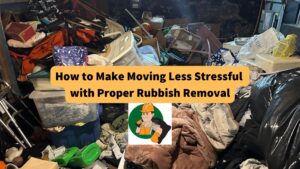To declutter clothes, assess and categorize them by the use and joy they bring. Keep what fits and is often worn; donate, sell, or recycle the rest. Test to decide what stays and what goes. Organize efficiently to match your lifestyle and reduce waste.
Wanna learn more about the answers to “how do you declutter and go of clothes”? Read our guide below.
Identify Your Clothing Needs
Start by figuring out what kinds of clothes you have. This first step helps you organize and find out what you don’t need anymore.
Assess the Total Volume and Categories of Your Clothes
Group your clothes into categories like tops, pants, dresses, jackets, shoes, and accessories. This helps you see what you have, find doubles, and rediscover items you might have forgotten.
Check How Often You Wear Things
Look at each category and see how often you wear those clothes. Most people find they wear a few clothes most of the time. This helps you decide which items to keep based on how much you actually use them.
Think About Clothes for Special Uses
Think about what clothes you need for different parts of your life, like work, casual days, or special events. Get rid of clothes that don’t fit your current lifestyle or you haven’t worn in over a year.
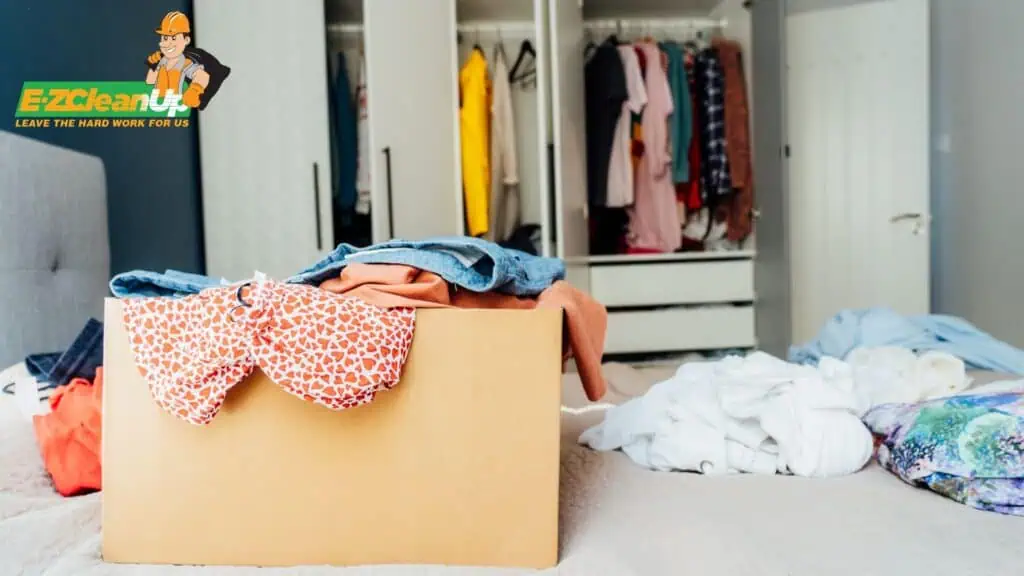
Evaluate and Sort
This step helps you free up space. More importantly, it makes your wardrobe more practical and enjoyable to use.
Apply the ‘Joy and Functionality’ Test
Use the Marie Kondo method: hold each item and ask if it makes you happy and if it’s useful. If it doesn’t make you happy or you haven’t used it in a year, consider letting it go. Make sure each item fits well and matches your style.
However, functionality is equally crucial. It’s not just about the emotional value; an item must also serve a practical purpose in your life today.
- Immediate Reaction: Trust your gut feelings when handling each piece. If it doesn’t make you happy or you haven’t used it in the past year, it’s probably time to let it go.
- Utility and Fit: Consider whether each item fits your current lifestyle and body. If it’s no longer a match due to size changes or lifestyle shifts, it may be time to part ways.
- Aesthetic Harmony: Items should function well and also contribute to a harmonious wardrobe. Items that clash with your overall style or are worn out need reassessment for their place in your closet.
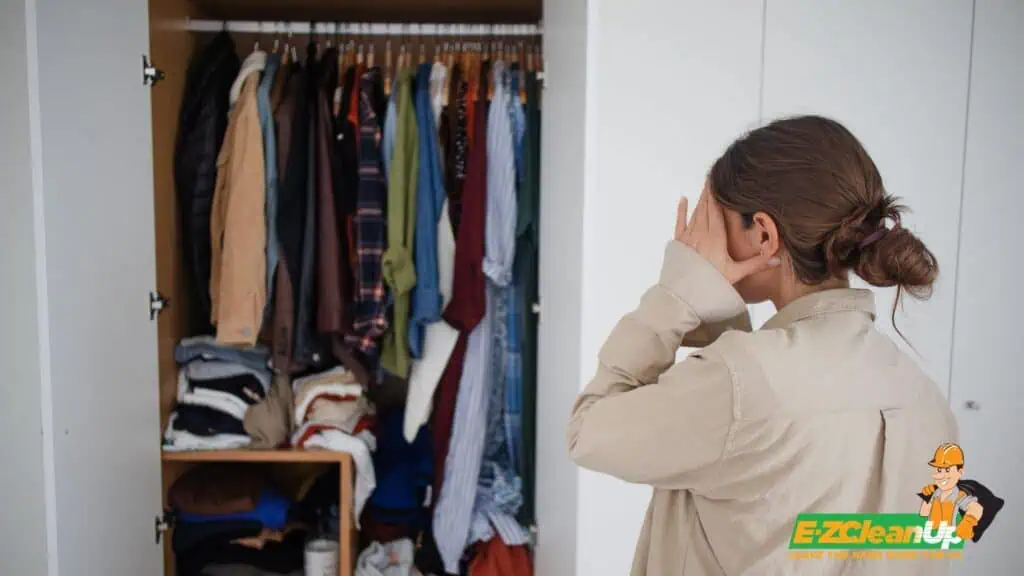
Use the ‘One-Year Rule’
If you haven’t worn something in the last year, think about letting it go. This rule helps you keep your closet filled only with items you really use or love.
Here are the steps to implement this rule:
- Inventory Assessment: Begin by sorting through your wardrobe and pulling out all items that have not been worn in the last year. This includes every piece, from seasonal clothing to daily wear.
- Evaluation of Each Item: Consider why each item was unworn. Factors might include fit issues, style changes, or lifestyle adjustments.
- Decision Making: Make thoughtful choices about what to keep based on the item’s condition, fit, and your emotional attachment to it.
- Handling Exceptions: While the one-year rule is a helpful guideline, exceptions can be made for special occasion outfits or items with significant sentimental value. However, these should be kept to a minimum to avoid unnecessary clutter.
Create a ‘Maybe’ Pile
If you’re not sure about some items, put them in a ‘maybe’ pile. After sorting everything else, try these items again and decide if they fit well and suit your current needs. Set a deadline, like a month, to make a final decision.
Set Clear Decluttering Rules
Decide to keep clothes that fit well, are in good shape, and are necessary. Use a systematic approach to decide quickly on each piece. Organize your clothes into groups to make this easier. Decide how many items to keep in each category, considering how often you use them.
Utilize Effective Decluttering Techniques
Organizing clothes into clear categories such as type, season, and occasion simplifies your daily routine by making outfit selection faster. It also maximizes your closet space efficiently.
Organize Clothes into Clear Categories (Type, Season, Occasion)
- By Type: Grouping items like tops, pants, dresses, and outerwear together makes it easier to locate what you need quickly without disrupting the order of other garments.
- By Season: Seasonal categorization ensures that you only have currently relevant items at hand. This helps in maintaining a clutter-free closet. Store off-season clothing in clearly labeled bins or vacuum-sealed bags to protect them from dust and save space.
- By Occasion: Separate your clothing into workwear, casual outfits, and special occasion attire. This makes it easier to find an outfit for any event. It also helps in assessing whether you have too many or too few items for specific needs.
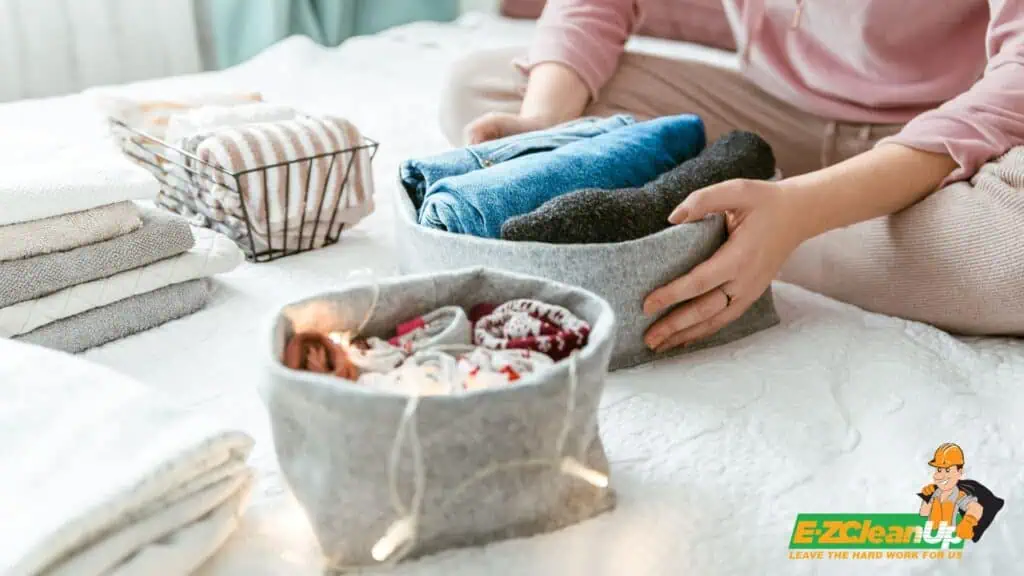
Use Storage Solutions to Maintain Organization
After deciding what to keep using the KonMari method or other decluttering methods you choose, the next step is to organize these items effectively:
- Visibility and Accessibility: Organize your kept items in a way that makes them easily accessible and visible.
- Regular Review: Periodically revisit the storage solutions to ensure they still meet your needs and adjust as necessary to prevent clutter from accumulating again.
Make Decisions on Disposal
When decluttering your wardrobe, deciding how to dispose of unwanted clothes responsibly is crucial.
Options for Clothes No Longer Needed: Donate, Sell, or Recycle
- Donate: Donating clothes that are still in good condition can significantly benefit local charities and thrift stores. Organizations like Goodwill and The Salvation Army resell these items in their thrift stores to support community programs with the proceeds.
- Sell: For items in excellent condition, consider selling them through consignment shops or online platforms.
- Recycle: For clothes that are worn out or damaged, recycling is a viable option. Textile recycling centers can transform these items into industrial rags, insulation materials, or other recycled textiles.
Consider Environmental Impact When Disposing of Clothes
Choosing to recycle and donate helps reduce landfill waste and supports sustainable practices in the fashion industry. When recycling, ensure the facility uses environmentally friendly processes.
Explore Local and Online Platforms for Selling Used Clothes
Exploring both local consignment stores and online platforms maximizes your ability to sell unwanted clothes. Local options may provide immediate cash, while online platforms tend to reach a broader audience. Platforms like eBay, Craigslist, and local Facebook selling groups are excellent places to start.
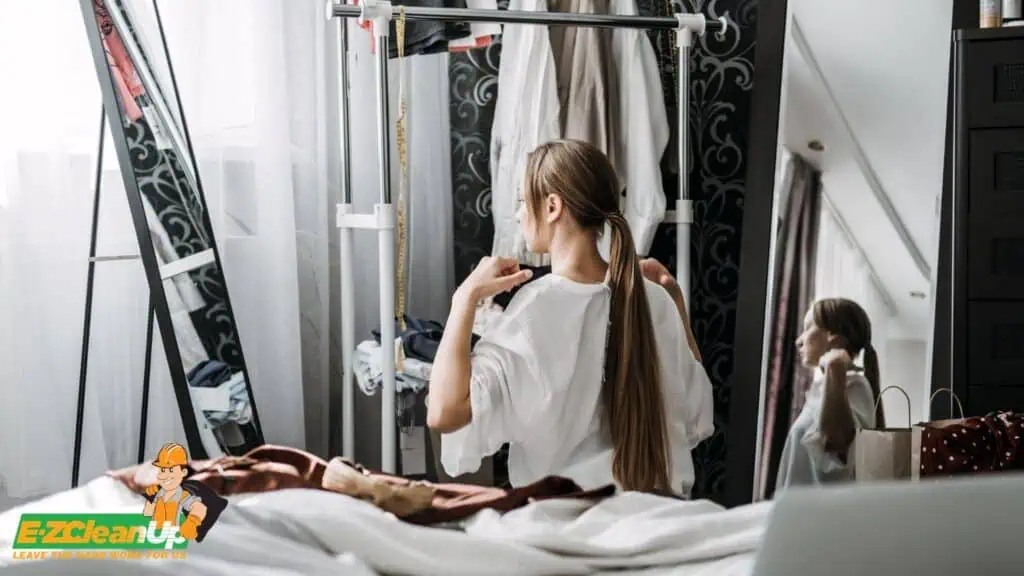
Overcome Emotional Attachments
Decluttering isn’t just about organizing your space; it can stir up a lot of emotions too. Let’s break down how to handle these feelings. Let go of items without losing memories, and see the good you’re doing by donating things.
Tackle the Emotional Side of Decluttering
It’s normal to feel sad or overwhelmed when you sort through your belongings, especially those with special memories. First, accept that it’s okay to feel this way.
A helpful tip is to think about the good parts of decluttering, like having a neater space and feeling less stressed. This can make you feel better about the process.
Reduce Attachment to Things
You can keep your memories without keeping all the stuff. One way is to take photos of things you care about or make a digital scrapbook. This lets you honor the memories without filling up your home.
See the Good in Donating Clothes
When you’re ready to part with your clothes, think about how they can help others. Giving to charity shops or people in need can change how you view your old items. Knowing your clothes are helping others can make it easier to let them go and make decluttering a more positive experience.
Plan for Future Acquisitions
After you declutter, it’s smart to rebuild your wardrobe thoughtfully by choosing quality over quantity. This helps you stay stylish and sustainable.
Spot What’s Missing in Your Wardrobe
After decluttering, see what you really need in your wardrobe by thinking about your lifestyle and what roles your clothes need to fill. Look at what you wear often.
Figure out what pieces could connect them or be used in different seasons. This careful approach helps you avoid buying things on a whim. It ensures every new piece serves a purpose.
Set a Budget for Wardrobe Updates
It’s important to plan how much you can spend on updating your wardrobe. Set a budget that fits your financial goals and style needs. You might use a budgeting method, like the envelope system, or set aside a percentage of your income for clothes.
This helps you keep your spending in check and lets you invest in higher-quality items that last longer.
Choose Quality Over Quantity
When buying new clothes, choose well-made and timeless pieces over trendy, short-lived items. Look for good fabrics and solid construction, and consider the brand’s ethics. This way, the pieces you add will last longer, be loved more, and help you cut down on waste.

Declutter with Ease!
Decluttering clothes can be a freeing yet challenging task. Once you’ve decided what stays and what goes, the next step is handling the outgoing pile effectively. That’s where EZ CleanUp steps up to help.
As a comprehensive junk removal service, we don’t just haul away your old furniture or pay cash for junk cars—we also provide an easy solution for responsibly disposing of your unwanted clothes. Whether it’s donating to local charities or ensuring items are recycled properly, our team supports your decluttering efforts.
Reach out to us to make your wardrobe refresh as smooth and responsible as possible!












